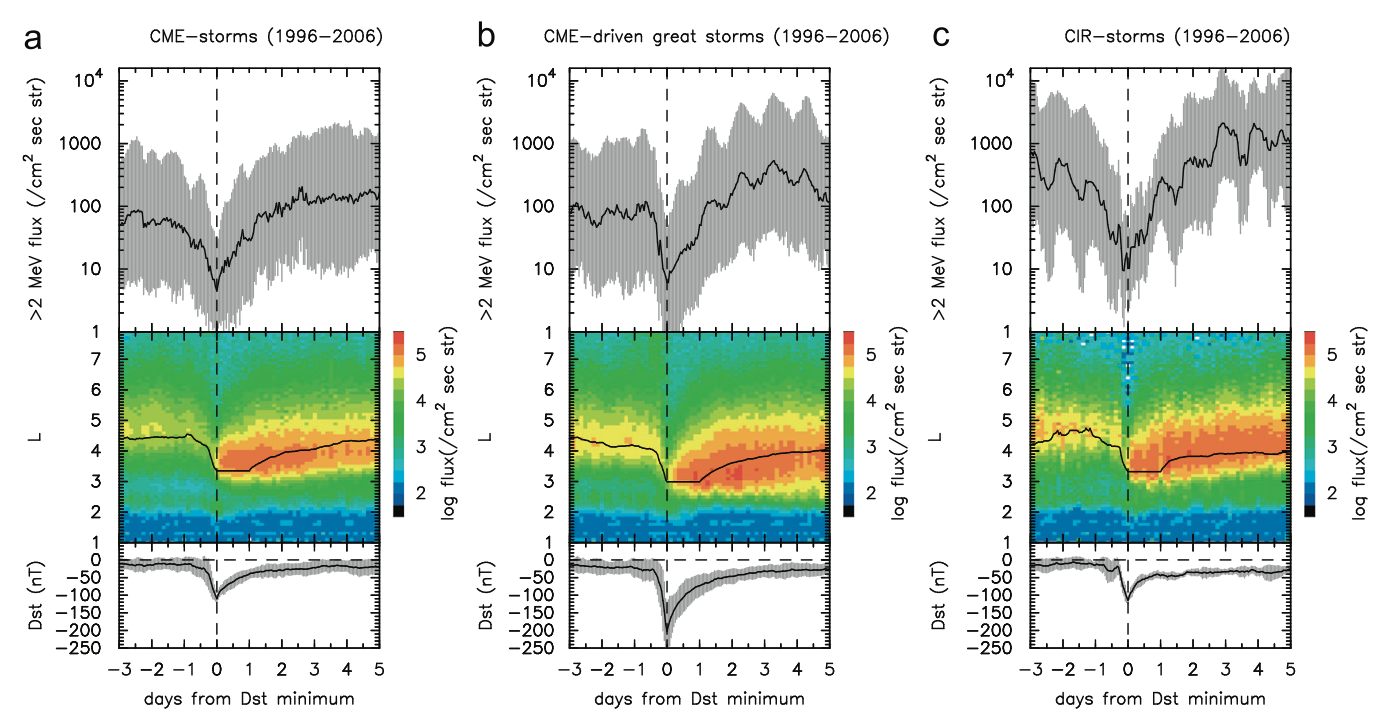GEMSIS-Magnetosphere
Study of the Dynamics of Radiation Belts and Relativistic Electron Acceleration
We have studied the solar wind - radiation belt coupling using satellite observations, ground-based observations, and numerical simulations. We found that flux enhancements of the outer belt largely depend on the structure of the solar wind, such as coronal mass ejections (CMEs) and corotating interaction regions (CIRs). We conclude that non-adiabatic acceleration through wave-particle interactions is essential to produce the large flux enhancement of the outer belt associated with the fast coronal hole streams. On the other hand, we confirmed that EMIC waves produced by the plasma instability of ring current ions cause the significant pitch angle scattering of relativistic electrons of the outer belt. These results (detailed below) apply to the development of physical modules in the GEMSIS-RB model.
- In order to investigate the magnetopause shadowing process as a possible loss mechanism of the outer belt, we investigated the inward motion of the outer edge of the outer belt using THEMIS/SST data. Our statistical analysis indicates that the flux loss events tend to be associated with the enhancement of the solar wind dynamic pressure. We found close correlations between the Earthward movement of the outer edge and the magnetopause. The results are consistent with those from the GEMSIS RB model. It is likely that the flux dropout that occurs far from the magnetopause is driven by the outward radial diffusion triggered by the magnetopause shadowing.
- We investigated a possible mechanism for the solar-cycle variations in the outer radiation belt, considering two typical types of magnetic storms categorized in accordance with solar wind drivers: CMEs and CIRs. Large flux enhancements in the inner portion of the outer belt tend to occur during the recovery phase of intense storms driven by CMEs, whereas large flux enhancements in the outer portion and at geosynchronous orbit tend to occur during the recovery phase of relatively moderate storms driven by CIRs. As CMEs and CME-driven storms occur during solar activity maxima, whereas CIRs and CIR-driven storms occur during the solar declining phase, we conclude that solar wind structures control the solar-cycle variations in the outer radiation belt.
Reference: Matsumura et al., JGR, 2011

Reference: Miyoshi and Kataoka, JASTP, 2011
 Japanese
Japanese